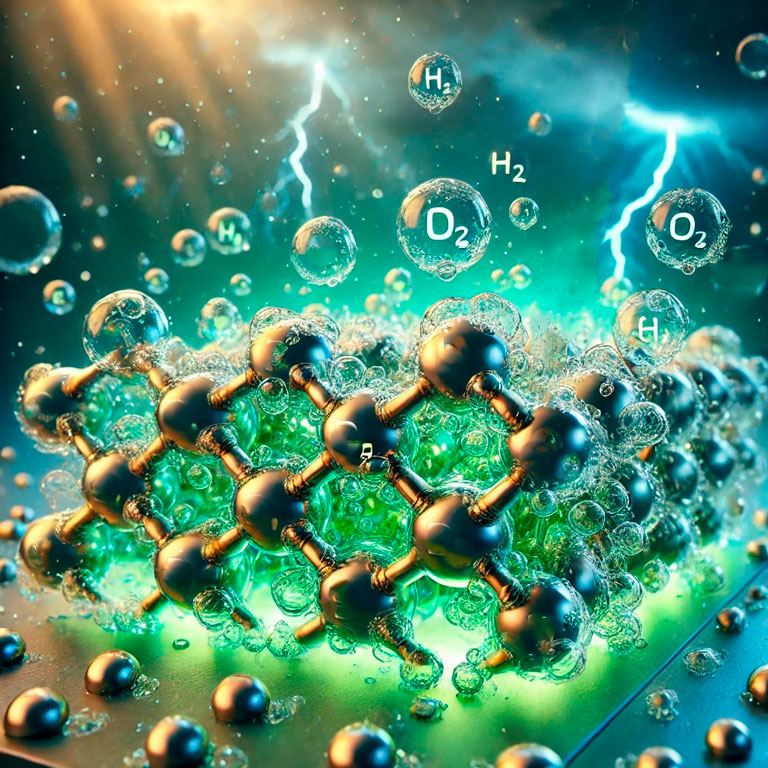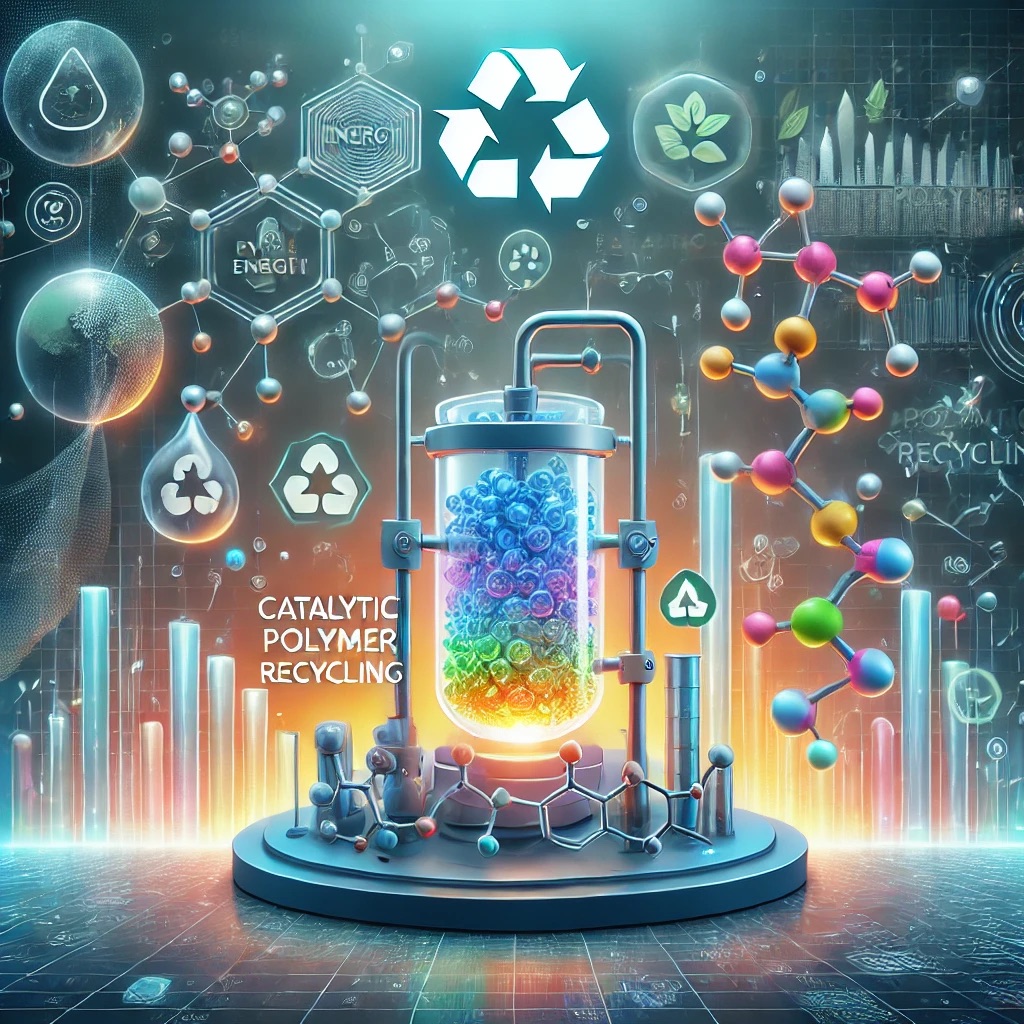Water Electrolysis for Green Hydrogen Production
Water electrolysis powered by renewable energy produces green hydrogen, which is considered the fuel of the future. Despite significant advancements in recent years with the installation of large water electrolysers, the components of water electrolysis still require further optimisation to produce clean hydrogen at a price competitive with grey hydrogen derived from fossil fuels. Particularly the development of durable and affordable electrocatalysts is essential, as they are the cornerstone of electrolysers.
Our research focuses on developing new synthetic methodologies for the preparation of metal oxide-based nanostructured electrocatalysts and electrodes for oxygen evolution reaction (OER) and hydrogen evolution reaction (HER). We are also exploring the development of single-atom catalysts for OER and HER to maximise atom economy and catalytic efficiency. We are also keen to investigate material behaviours under operational conditions by using spectroscopic tools.
CO2 Fixation to Prebiotic and Value-added Chemicals
CO2 has a negative reputation as a greenhouse gas that dramatically contributes to global warming and climate change. However, it is also a crucial molecule in photosynthesis and an important feedstock to produce valuable products.
Additionally, CO2 has played an essential role as a building block in the emergence of life on our planet.
Part of our research effort is devoted to the development of concepts and heterogeneous catalysts for the thermocatalytic conversion of CO2 into prebiotic organic compounds and value-added chemicals.
We are particularly interested in simulating the environments of deep-ocean hydrothermal vent environment, where CO2 fixation occurs via an autocatalytic process over natural minerals.
CO2 has a negative reputation as a greenhouse gas that dramatically contributes to global warming and climate change. However, it is also a crucial molecule in photosynthesis and an important feedstock to produce valuable products.
Additionally, CO2 has played an essential role as a building block in the emergence of life on our planet.
Part of our research effort is devoted to the development of concepts and heterogeneous catalysts for the thermocatalytic conversion of CO2 into prebiotic organic compounds and value-added chemicals.
We are particularly interested in simulating the environments of deep-ocean hydrothermal vent environment, where CO2 fixation occurs via an autocatalytic process over natural minerals.
Halide Perovskites for Solar Energy Conversion
Halide perovskites have gained significant attention as light-harvesting semiconductors, particularly in the field of perovskite solar cells over the last two decades. Their exceptional photoelectronic properties make them suitable for a wide range of applications including in photocatalysis.
In our research group, we focus on the preparation of novel halide perovskite structures with tunable physicochemical properties for converting solar energy into chemical energy through model redox and coupling reactions.
Additionally, we are exploring the potential of photocatalytic polymer cycling using halide perovskites.
Catalytic Plastic Recycling
Plastic production and waste generation have rapidly increased due to the continuous growth of the world’s population. About 20% of plastic waste is mismanaged, littered, or leaked into the environment. This leads to waterway pollution and harm to wildlife and ecosystems. The improvement of waste management and the creation of a circular economy for plastics recycling are of vital importance.
Mechanical recycling can effectively recover thermoplastics such as polyethylene terephthalate and high-density polyethylene, but faces technological challenges in recovering cross-linked polymers such as polyurethane. Our research interest is the development of thermo- and photo-catalytic concepts and materials for chemical recycling of plastic waste based on cross-linked polymers. In particular, the design and investigation of supported single-atom and nanocluster catalysts to accelerate the chemical recycling of polymers.
Plastic production and waste generation have rapidly increased due to the continuous growth of the world’s population. About 20% of plastic waste is mismanaged, littered, or leaked into the environment. This leads to waterway pollution and harm to wildlife and ecosystems. The improvement of waste management and the creation of a circular economy for plastics recycling are of vital importance.
Mechanical recycling can effectively recover thermoplastics such as polyethylene terephthalate and high-density polyethylene, but faces technological challenges in recovering cross-linked polymers such as polyurethane. Our research interest is the development of thermo- and photo-catalytic concepts and materials for chemical recycling of plastic waste based on cross-linked polymers. In particular, the design and investigation of supported single-atom and nanocluster catalysts to accelerate the chemical recycling of polymers.





